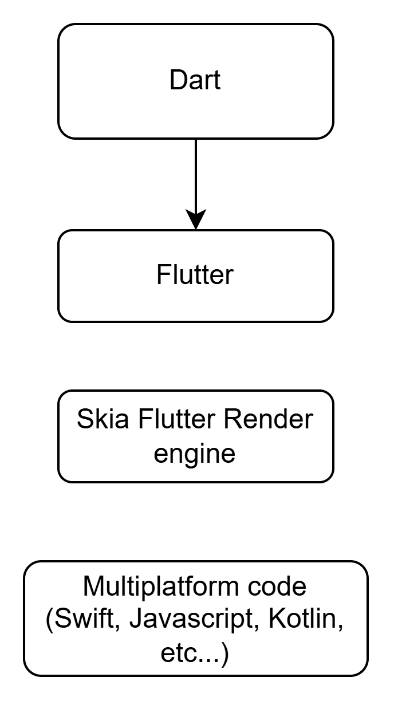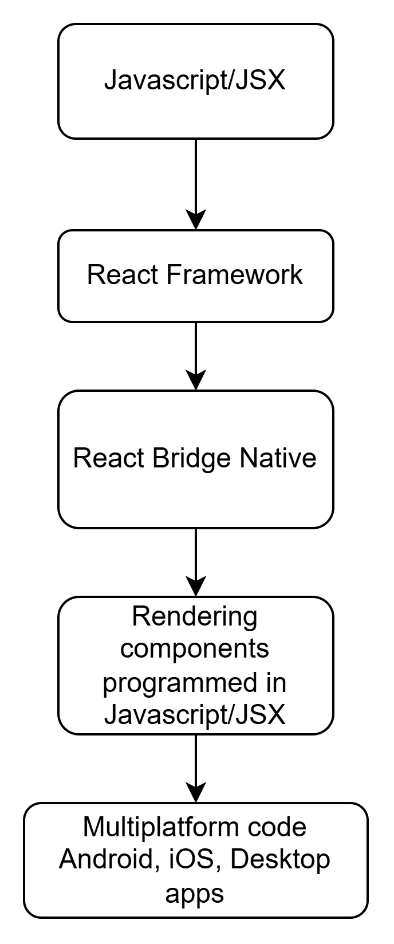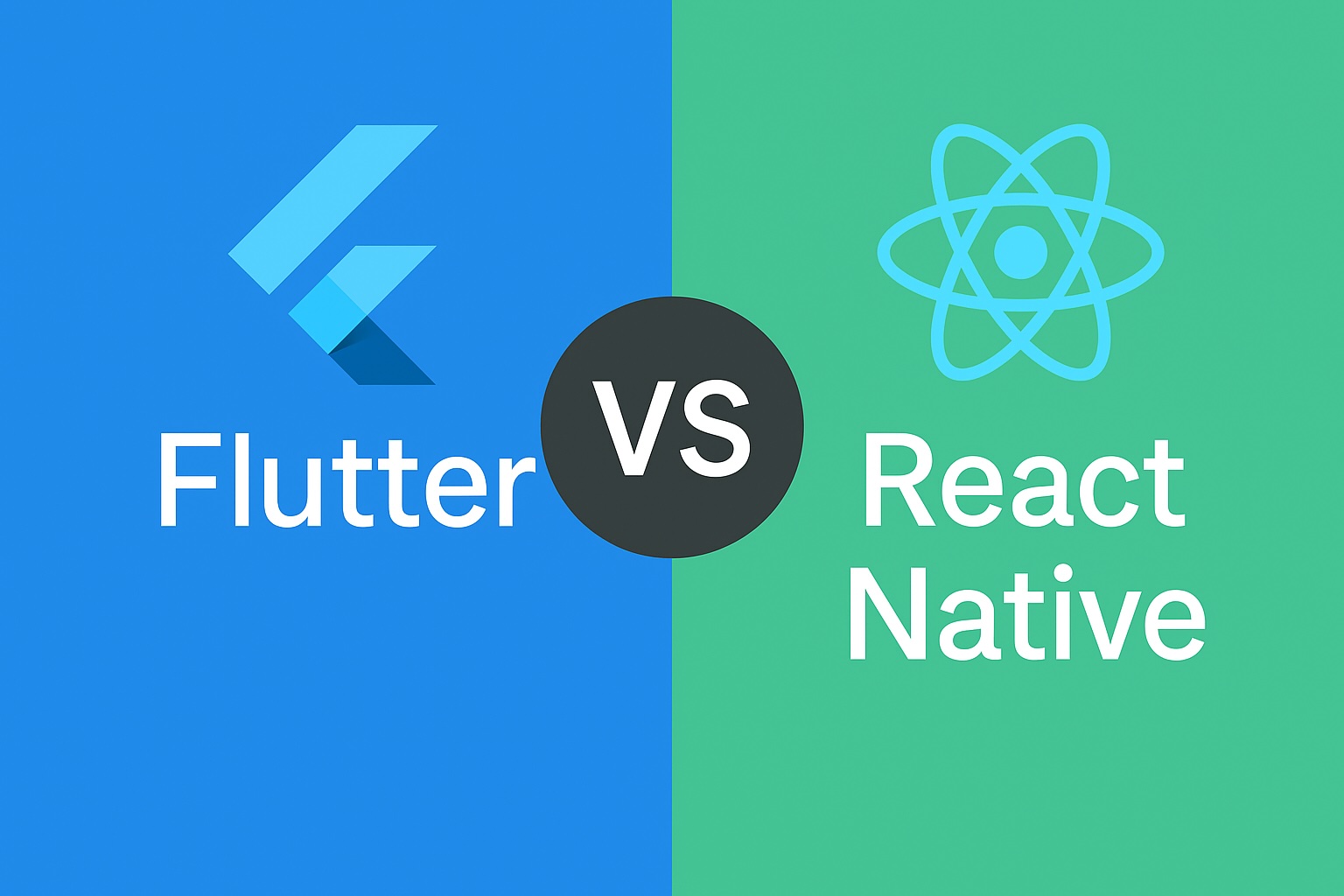Mobile application development has become one of the most dynamic areas in technology. Many companies, startups, and entrepreneurs face the same question: which technology should I use to build my mobile app?
At this point, two names usually stand out: Flutter and React Native. However, confusion often arises, especially when React is mentioned. That’s why in this article we’ll clarify the differences, explore how these technologies work, and explain the learning curve for different profiles. The goal is to give you a solid foundation to understand which path may best fit your needs.
React is not the same as React Native
Before diving into comparisons, it’s important to clarify:
- React: a JavaScript library created by Meta (Facebook) for building user interfaces in web applications.
- React Native: a framework that extends React’s concepts to the mobile world, enabling the creation of iOS and Android apps using JavaScript.
In short: React is for the web, while React Native uses that philosophy for mobile applications.
Differences between Flutter and React Native
Although both serve to create cross-platform mobile applications, their approaches are quite different.
Programming language
- React Native: uses JavaScript, the most widely used language in web development. This makes it a natural choice for teams already familiar with web technologies.
- Flutter: uses Dart, a language designed by Google with a focus on performance and consistency.
Design philosophy
- React Native: works as a bridge. The JavaScript code communicates with the native components of iOS and Android, giving the app a look and feel very close to native.
- Flutter: comes with its own rendering engine (Skia). It doesn’t rely on native system components but instead draws everything directly on the screen, ensuring uniformity across platforms.
The learning curve: how easy is it to learn each one?
A key factor when choosing between Flutter and React Native is not only the technology itself but also how quickly a person or team can adopt it. The learning curve depends heavily on the developer’s background:
1. Web developers with JavaScript/React experience
- For this profile, React Native is a natural step.
- They already know JavaScript and understand React’s workflow (components, props, state), so transitioning to mobile feels smoother.
- The main challenges are learning the differences between web and mobile: memory management, navigation between screens, and accessing device APIs.
2. Developers with strongly typed language experience (Java, C#, Swift, Kotlin)
- These developers often adapt faster to Flutter, since Dart shares familiar concepts: strong typing, object-oriented design, and clear syntax.
- Flutter’s “widget-based” architecture also feels intuitive to those used to building structured interfaces in native environments.
- The challenge here is getting used to the fact that Flutter doesn’t rely on system-native components, but builds everything within its own framework.
3. Beginners entering mobile development
- For those starting from scratch, the choice can vary:
- React Native benefits from JavaScript’s popularity and the vast amount of learning resources available.
- Flutter, despite using Dart (less known), tends to be more structured, which can help beginners build good practices from the start.
- The decision often depends on future goals: want to connect with web development? → React Native. Want to focus on mobile and cross-platform consistency? → Flutter.
4. Designers or UI/UX-focused profiles
- Flutter is appealing because it offers full control over the interface and ensures visual consistency across all platforms.
- React Native, by relying on native components, may create variations between Android and iOS that designers need to account for.
- For this profile, the learning curve lies less in the language and more in understanding how each framework renders interfaces.
How do they work internally?
The best way to understand the difference is to look at their internal layers, as illustrated in the diagrams.
🟦 Flutter workflow
- Dart: the application code is written in Dart.
- Flutter Framework: interprets the code and translates it into widgets (buttons, screens, menus, etc.).
- Flutter Engine (Skia): directly draws everything on the screen, without relying on system-native components.
- Result: a single app that runs consistently on iOS, Android, web, and desktop.

🟩 React Native workflow
- JavaScript/JSX: the application code is written in this language, very familiar to web developers.
- React Framework: organizes the logic and components, just like React on the web.
- React Native Bridge: acts as a bridge, connecting JavaScript code with native modules in Android and iOS.
- Rendering: elements defined in JSX are turned into native components of each operating system.
- Result: the app runs on Android, iOS, and even desktop projects, while relying on the native UI elements of each system.

Visual Development Platforms: FlutterFlow and Beyond
Not every team wants to start from raw code. In recent years, visual development platforms (sometimes called no-code or low-code tools) have emerged to speed up mobile app creation.
That’s why we use platforms like FlutterFlow. In upcoming articles, we’ll dive deeper into these platforms and share more detailed insights on how they’re transforming mobile app development across the technological world.
Conclusion
When evaluating Flutter and React Native, it’s not about deciding which one is universally better, but about identifying which is more aligned with your team, your project, and your business goals.
- React Native: best suited for teams with strong JavaScript/React experience, especially when leveraging web knowledge for mobile projects.
- Flutter: attractive for teams seeking a unified cross-platform framework with consistent visual design and structured development practices.
Both technologies are solid and backed by large communities. The key is to choose the one that best supports your learning path and development strategy.
Interested in a free app review?
Schedule a call.png)
